
It is perhaps unavoidable that the competition and women's football generally is compared to the men's equivalent. It is not difficult to find patronising commentary on television and in print media whenever women's football is covered. There is almost surprise, particularly in the Irish and UK coverage with which I am most familiar, that professional athletes are technically skillful, competitive, and committed. (There are similarities in the treatment of female football analysts, referred to by Alex Scott here. That it is surprising that someone who has played 140 times for her country should be insightful about the game says a lot about our attitudes to women in football).
Perhaps these attitudes are based on an outdated notion of the women's game, though there are certainly socialised stereotypes at play as well. In a recent article in the Irish Examiner, Larry Ryan referred to a comment by England striker Toni Duggan that she was somewhat heartened to see the anger from opposition fans when she celebrated a goal she scored for Barcelona. For her it showed that the game mattered and the players were being taken seriously. The article though warns that the women's game should try to avoid going down the road of the men's game and should instead try to hold on to the values of inclusion, loyalty, and community.
This doesn't mean of course that the women's game will not get more competitive, skillful, and demanding.
The negative stereotypes will take time to break down of course, but it is interesting to review the data on previous World Cup Finals, both women's and men's, to shed some light on the game's development.The USA's 13-0 demolition of Thailand has led to some suggestions that the World Cup is losing credibility and the increase in teams from 16 to 24 will damage the tournament with more one-sided games.
The data doesn't back this up however.
The graph below shows the goals per game at each of the last seven World Cup Finals tournaments (the last men's tournament was 2018 in Russia and the last Women's tournament was in 2015 in Canada). For information, in the first round of group matches in the current tournament (12 in all) to Tuesday June 11, there have been 3.17 goals per game. Excluding the USA-Thailand game the ratio is 2.27 goals per game).
It is striking how the ratio of goals per game has declined over the seven tournaments. From having just over a goal more per game, the women's tournament has now reached a comparable level with the men's. Whether this is a positive or negative development is unclear, though even as the number of countries in the finals of the Women's World Cup has increased goals have become more difficult to come by.
Similarly with the number of low-scoring games, there has been a narrowing in the differences between the tournaments over time. The Women's World Cup Finals did not see a scoreless match until the final day of the third World Cup (in 1999) when both the third place play-off and the final ended nil all. Up to the last World Cup finals there have been nine scoreless matches. There has been one more in current tournament when Argentina parked the bus against the favoured Japanese. In comparison over the last seven men's tournaments there has been an increase in scoreless matches from close to 5% of matches to 15% in 2014. In 2018 there was only one scoreless match.
It is interesting though to include the number of games that have ended 1-0. The green bar in the graph below shows the proportion of matches that have had one goal or less (within 90 minutes). The women's World Cup has gone from about 12% of matches in the first tournament in 1991 (and only 6% in 1999) to a third of matches in 2015. (A third of the 12 games in the current tournament have had one goal or less).
The grey bar shows the corresponding data for the men's tournaments. Rising from 1994 to 2010 before falling in 2014 and 2018, the level has been between about a quarter and a third. The women's rate has exceeded the men's in the most recent tournament.
It may be that the fewer number of participants in the women's finals means the best teams are playing and the matches are closer. The number of teams taking part increased however in 2015 from 16 to 24. Adding the extra teams has not diminished the closeness of the games (measured by the proportion of low scoring games). It may instead point to an increase in standards - or at least a decrease in the variability of standards - at the elite level and the women's game converging with the men's game, whether for good or ill.
The data may also point to greater levels of organisation in coaching and associated resources from national bodies for the women's national teams, and further posts may explore that idea.
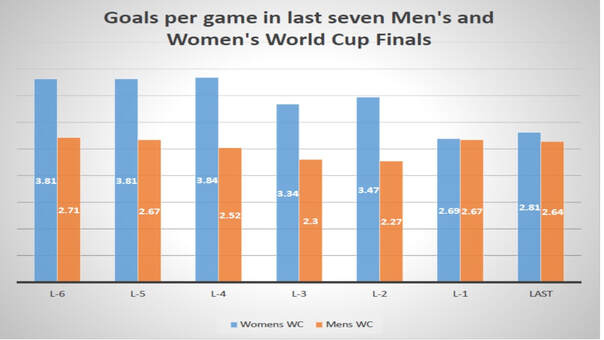
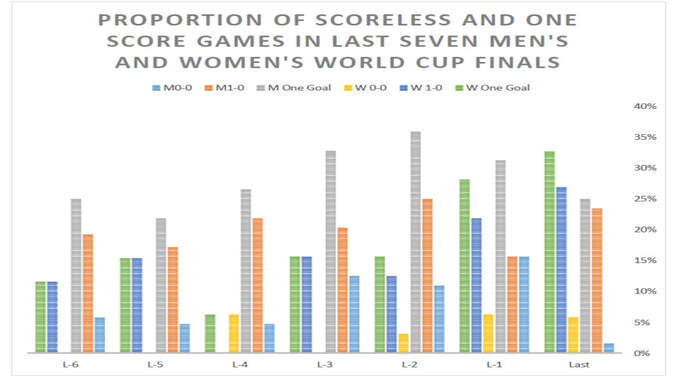
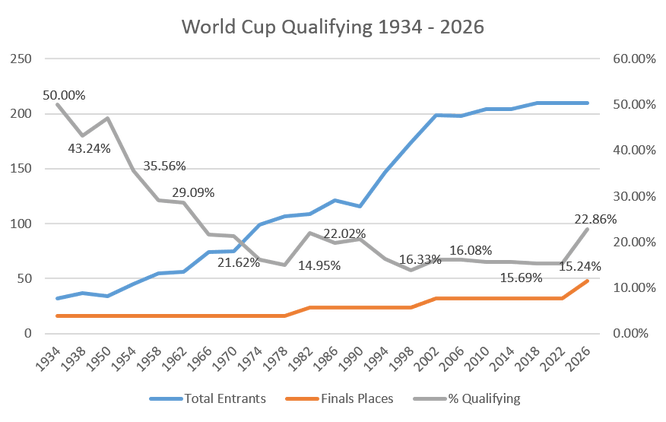
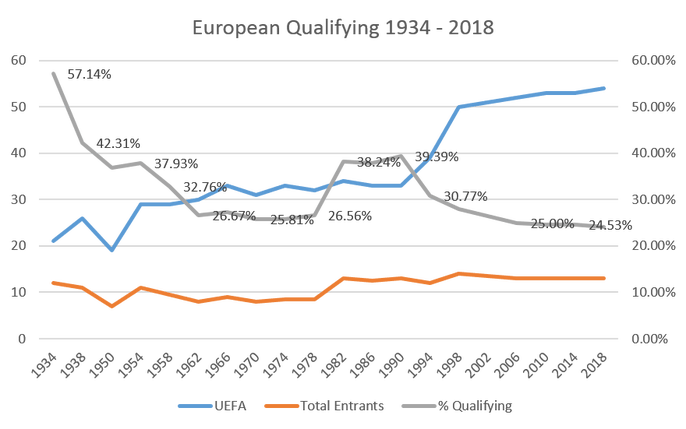

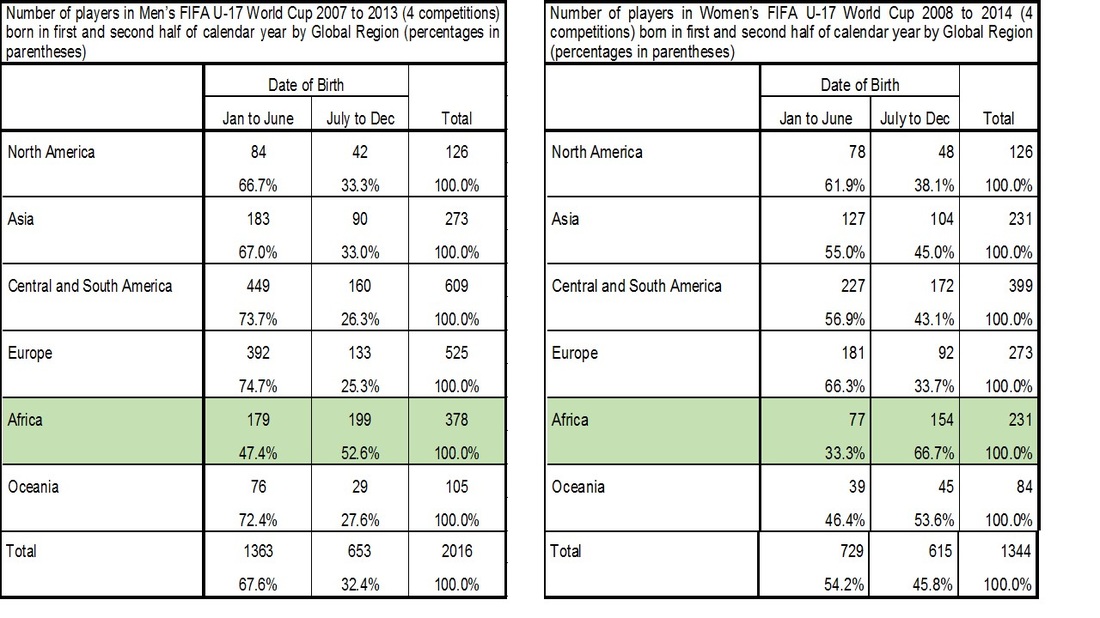
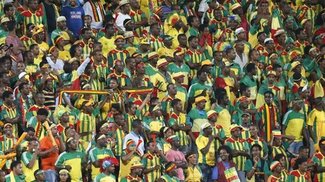
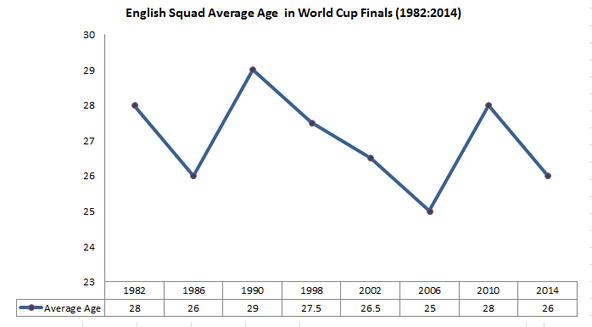





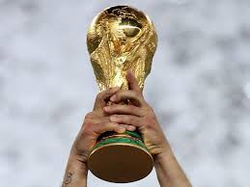



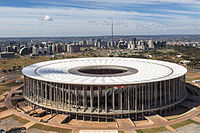

 RSS Feed
RSS Feed